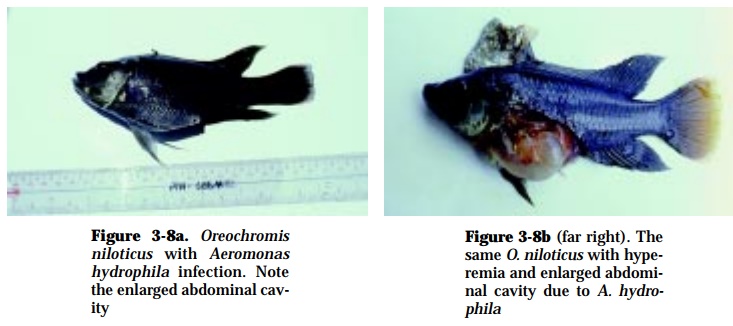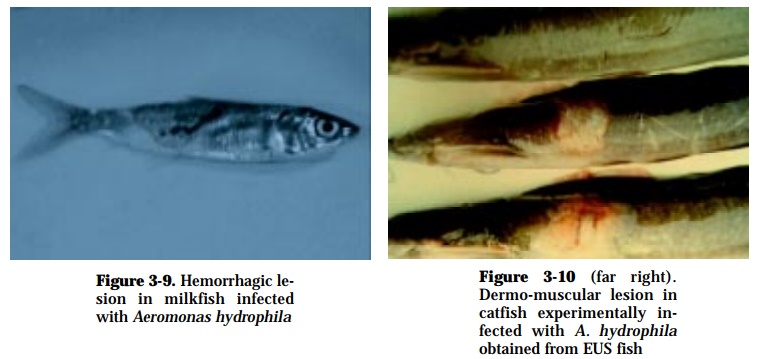Chapter: Health Management in Aquaculture: Bacterial diseases
Motile Aeromonad Septicemia - Bacterial Diseases of Fish
Motile Aeromonad Septicemia
CAUSATIVE AGENT:
Aeromonas hydrophila, A. caviae, and A. sobria.
Species affected:
Tilapia (Oreochromis niloticus), milkfish (Chanos chanos), goldfish (Carassiusauratus), catfish (Clarias batrachus), snakehead(Ophicephalus striatus), goby (Glossogobius guirus), climbing perch (Anabas testudineus), gourami (Tricho-gaster sp.), mullet(Mugil cephalus)
GROSS SIGNS:
External signs of motile aeromonad disease vary from darkening in color, en-largement of the abdominal area (Fig. 3-8a) to an extensive superficial redden-ing of a large area of the body (Fig. 3-9), often with necrosis of fins or tail and extensive ulceration over a considerable portion of the flanks or dorsum. The ulcers are usually shallow and the surface may go brown as it necrotizes or decays (Fig. 3-10). Other disease signs are scale loss, mouth sores, exophthalmia, and eye opacity. Internally, there may be dropsy (Fig. 3-8b), hyperemia, and the congestion of the internal organs.


EFFECTS ON HOST:
The organisms are usually transmitted through the mouth but may also enter through the skin or gill abrasions. The organisms multiply in the intestine or at the site of invasion and are spread throughout the body by the bloodstream. Internally, there may be ascitic fluid, anemia and damaged internal organs which may lead to mortalities. Mortality as high as 80% may occur among physically stressed, nutritionally deficient, anoxious or injured young fish. Older fishes are less susceptible to motile aeromonads, although 20 to 35% mortalities are not common.
DETECTION AND CULTIVATION:
Squash preparation of the kidney is useful when searching for the etiological agent of the disease. The organisms appear as rod-shaped bacteria, a few are coccoids or short rods in form, usually in single or pairs but rarely in short chains or filaments. They grow well on most common laboratory media suchas BHIA, TSA and NA.
PREVENTION AND CONTROL:
• Avoid overcrowding of fish in holding facilities.
Related Topics